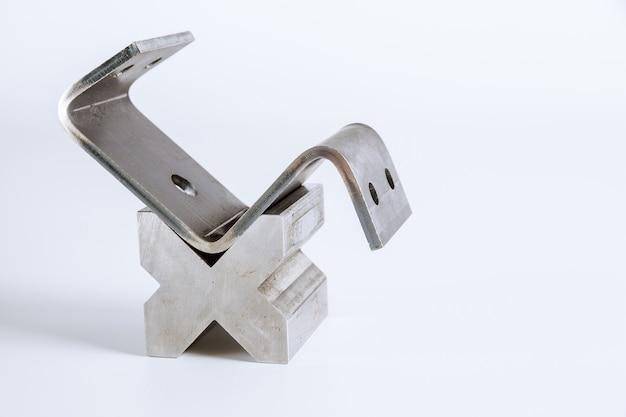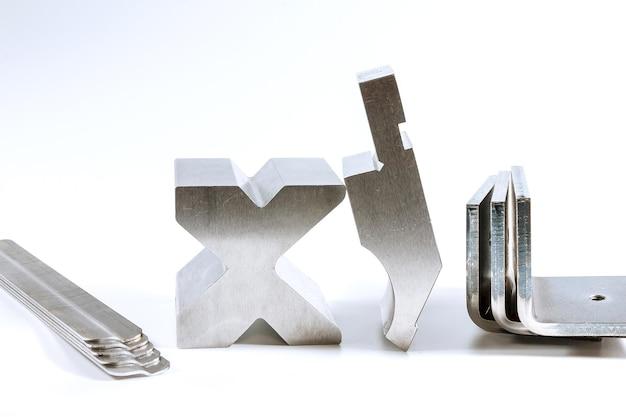Are you dealing with stubborn black mold on your stainless steel surfaces? You’re not alone! Unfortunately, stainless steel can be susceptible to mold growth if not properly maintained. But don’t worry, we’re here to help you tackle this issue head-on.
In this comprehensive guide for 2023, we’ll answer all your burning questions about removing black mold from stainless steel. From the best black mold killers to the safety concerns of DIY cleaning, we’ve got you covered. We’ll even explore whether vinegar or hydrogen peroxide is better for combating mold, as well as the potential risks of using bleach.
So, let’s dive in and discover the most effective methods to eliminate black mold from your beloved stainless steel appliances and surfaces. Say goodbye to unsightly black spots and hello to a clean and mold-free environment!
How to Banish Black Mold from Stainless Steel
Stainless steel appliances are sleek, modern, and resistant to rust, making them a popular choice for kitchens. However, even stainless steel is not immune to the pesky problem of black mold. If you’ve discovered those telltale black spots on your stainless steel surfaces, don’t panic! We’ve got some handy tips and tricks to help you remove black mold and restore the shine to your stainless steel.
Identifying the Culprit: Black Mold
Black mold, scientifically known as Stachybotrys chartarum, loves to lurk in damp and humid environments. So, it’s no surprise that it might set up camp on your stainless steel appliances, especially if they are in close proximity to a sink or a dishwasher. This fungus enjoys feasting on organic matter and can cause a range of health issues if left unchecked. But fear not, with the right approach, you can fight back against this unwanted houseguest.
Arm Yourself with Cleaning Weapons
Before you jump into battle against black mold, gather your cleaning weapons. You’ll need a few trusty items to banish it from your stainless steel surfaces. Here’s what you’ll need:
- Rubber Gloves: Protect your hands from any potential irritation or chemicals in the cleaning products.
- Vinegar: This magical liquid is an all-natural superhero when it comes to cleaning. Its acidity helps break down mold and disinfect surfaces.
- Baking Soda: Not only great for baking cookies, but also for its mild abrasive properties that aid in wiping away mold.
- White Cleaning Cloths: Soft, lint-free cloths are perfect for gentle yet effective cleaning.
- Toothbrush: A trusty toothbrush with soft bristles will help you tackle tricky moldy nooks and crannies.
Step-by-Step Guide to Banishing Black Mold
Now that you’re armed with your cleaning weapons, it’s time to roll up your sleeves and start fighting. Follow these steps to remove black mold from your stainless steel:
1. Prepare Your Battlestation
Clear the area around the affected stainless steel surface to ensure easy access. Open a nearby window or turn on the exhaust fan to provide adequate ventilation.
2. Don Your Gloves
Protect those precious hands of yours by putting on a sturdy pair of rubber gloves. Safety first, mold second!
3. Mix up a Mold-Busting Solution
Create your homemade cleaning solution by combining equal parts vinegar and water. For extra mold-fighting power, add a teaspoon of baking soda to the mix. Stir it up until the baking soda dissolves.
4. Apply the Magic Potion
Douse a soft cleaning cloth with your vinegar and water solution and gently wipe the moldy areas on the stainless steel. Let the solution sit on the surface for a few minutes to do its mold-busting magic.
5. Get Scrubbing
Grab your trusty toothbrush, dip it in the cleaning solution, and attack those hard-to-reach corners and crevices where the mold may be hiding. Scrub gently in a circular motion to dislodge and remove any stubborn mold.
6. Rinse and Repeat
After scrubbing away the mold, rinse the stainless steel surface thoroughly with warm water. Make sure all traces of the cleaning solution and mold are gone.
7. Dry to Perfection
Use a clean, dry cloth to wipe down the stainless steel surface and remove any remaining moisture. Ensure your appliance is completely dry to prevent any new mold growth.
Victory over Mold!
Congratulations! You’ve successfully fought off black mold from your stainless steel surfaces. Enjoy the clean and sparkly result of your hard work. Remember, prevention is key, so be sure to keep your stainless steel clean and dry to keep mold at bay. Now go show off your mold-free kitchen and make your friends green with envy!
FAQ: How Do You Remove Black Mold From Stainless Steel
What is the best black mold killer
When it comes to tackling black mold on stainless steel, one of the most effective killers is a mixture of bleach and water. This powerful combination can help eliminate mold spores and prevent further growth.
Is it safe to clean black mold yourself
While cleaning black mold can be done by homeowners, it’s crucial to prioritize safety. Make sure to wear protective gear such as gloves and a mask to avoid inhaling or coming into direct contact with the mold.
What happens when you put bleach on black mold
When bleach is used on black mold, it attacks the mold’s protein structure, effectively killing it. However, it’s important to note that bleach cannot penetrate porous surfaces, so thorough cleaning may be necessary to remove all traces of mold.
Does vinegar kill mold
Yes, vinegar is indeed an effective mold killer. The acidic nature of vinegar helps eliminate mold spores and prevent them from returning. It’s a natural and safer alternative to harsh chemicals.
Is vinegar or hydrogen peroxide better for mold
Both vinegar and hydrogen peroxide are effective in killing mold. However, hydrogen peroxide has the added advantage of being able to reach into porous surfaces, making it a good option for removing mold from hard-to-reach areas.
What kills black mold
Apart from bleach, fungicides specifically designed to combat black mold can also be highly effective in eradication. These products are readily available in stores and can be used according to the manufacturer’s instructions.
What kills mold instantly
While no method can guarantee instant mold elimination, various cleaning products like hydrogen peroxide, vinegar, and bleach can work swiftly to neutralize the mold and hinder its growth.
Does vinegar damage stainless steel
No, vinegar is generally safe for stainless steel appliances. However, to avoid any potential damage, it’s recommended to rinse the surface thoroughly after using vinegar and wipe it dry.
Can black mold grow on stainless steel
Black mold can indeed grow on stainless steel given the right conditions of moisture and warmth. Stainless steel appliances, especially if not properly cleaned and maintained, can become breeding grounds for mold growth.
What happens if you clean black mold
Cleaning black mold helps eliminate its presence and prevents further growth. Regular cleaning is vital to maintain a healthy and hygienic environment, especially in areas prone to moisture and humidity.
Can mold grow on stainless steel pots
While it’s less likely for mold to grow on stainless steel pots themselves, the lids or areas with trapped moisture can provide a suitable environment for mold growth. Proper cleaning and ventilation can help prevent this issue.
Does black mold grow on metal
Black mold can grow on various surfaces, including metal, if the conditions are favorable. Moisture, warmth, and organic matter provide an ideal breeding ground for mold, which can manifest as unsightly black patches.
What kills mold on stainless steel
To effectively kill mold on stainless steel, use a mixture of bleach and water. Apply the solution to the affected area, let it sit for a few minutes, scrub gently, and then rinse and dry thoroughly.
What naturally kills mold
Apart from vinegar, other natural mold killers include tea tree oil, grapefruit seed extract, and baking soda. These alternatives offer a more eco-friendly approach to mold removal.
What kills black mold on metal
For black mold specifically on metal, a mixture of hydrogen peroxide and water is highly effective. This solution can penetrate porous surfaces to reach the root of the mold and eradicate it.
What are symptoms of black mold
Exposure to black mold can cause a range of health symptoms, including respiratory issues, allergies, skin irritation, headaches, and even more severe reactions in individuals with compromised immune systems.
Is vinegar or bleach better for killing mold
Both vinegar and bleach have their advantages for killing mold. While vinegar is a safer and natural option, bleach is highly effective at neutralizing mold spores. Choose the one that aligns with your preferences and the severity of the mold problem.
How do you remove black spots from stainless steel appliances
To remove black spots from stainless steel appliances, create a paste using baking soda and water. Apply the paste to the affected area, gently scrub in a circular motion, and then rinse and dry thoroughly.
What are black spots on stainless steel
Black spots on stainless steel can be a result of various factors, such as mold, mineral deposits, or corrosion. Proper cleaning and maintenance can help prevent and eliminate these unsightly spots.
What is black stuff on stainless steel
The black stuff on stainless steel is often mold or mildew that has found a suitable breeding ground. It can occur due to moisture, poor ventilation, or lack of regular cleaning. Removing this black stuff promptly is important to maintain the aesthetics and cleanliness of stainless steel.
Does bleach kill mold on stainless steel
Yes, bleach is an effective mold killer on stainless steel. When used correctly, it can neutralize mold and prevent its regrowth. However, be sure to follow safety precautions and thoroughly rinse and dry the stainless steel after using bleach.
With these frequently asked questions answered, you now have the information you need to tackle black mold on your stainless steel surfaces. Remember to prioritize safety, choose an effective cleaning method, and maintain a clean and hygienic environment to keep black mold at bay.

